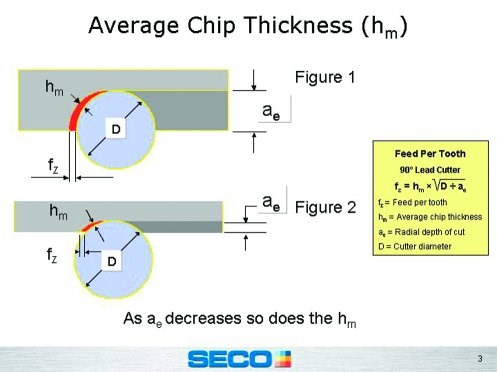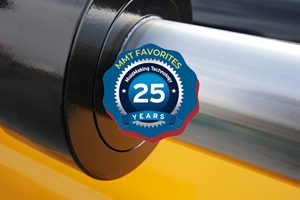SPECIAL FEATURE: Education/Training - Tailored Training Is the Best Way to Build Effective Manufacturing Teams
On-the-road training brings together owners, managers, programmers and operators in one classroom to develop a team-building process.
It's no secret that the U.S. moldmaking industry is facing serious competition from shops in Asia and Eastern Europe that operate in a much different cost environment. The answer to this challenge is to increase the quality and productivity of U.S. shops to a level that fully compensates for the higher cost structure under which they operate; training has a big role in making this happen.
Given the realities of today's environment, there is a good chance that traditional, offsite, lecture-based training will not make the difference. That model is being successfully challenged by a new methodology that emphasizes onsite, hands-on, shop floor-oriented training that builds productive manufacturing teams while teaching basic skills.
On-the-Road Training
A tailored training-on-the-road approach has been developed for today's leaner, more aggressive shop that can't afford the lost production and expense of the old system. It is also ideally suited to a format that brings owners, managers, programmers and machine operators together in a way that encourages the kind of open communication at the heart of any team-building process.
For example, most major tooling suppliers have offered traditional training for many years, usually at the company's headquarters or regional centers. A customer sends a select group of employees to the class, and expects them to pass on the learned knowledge to other employees when they return.
Training the trainers is a good theory and can be effective when everything works out just right; however, many times that simply doesn't happen. Not everyone is a good student, and there are even fewer good teachers, so the results of this approach tend to be spotty at best. Even when it works, this approach is more likely to produce individual subject matter experts than cooperative, mutually-supportive manufacturing teams.
Reducing Your Co-workers' Problems
There are many benefits to having owners, managers, programmers and machine operators sitting next to each other in the same classroom. It presents the opportunity to learn about what each individual can do to reduce the other guy's problems. Each of them inevitably has something to learn from—and teach—the others.
Owners and managers can see first-hand how tool purchasing decisions can limit a programmer's flexibility and impact productivity on the machine. Programmers experience the difference between book solutions and the realities of making chips deep inside a die cavity. Machine operators gain a greater appreciation for all the factors that have to be balanced to create a productive operation, and run a successful business.
For most shops, team building isn't the main reason for bringing in a training team, but it is often the single most valuable result of the effort. The kind of productivity necessary to compete in today's market can only be achieved by having a smoothly functioning, fully-integrated, mutually-supporting team effort at all levels, and those teams have more than once coalesced during a tailored onsite tooling training session.
Teaching Experience
What sort of knowledge do today's shops need to increase their productivity? The answer is almost always basic knowledge. Even in today's job market, mold and die shops often find it difficult or impossible to hire employees with the training and experience perform at the required level. That is true of both machine operators and CNC programmers in job markets from coast to coast. Often, most of the time in a training-on-the-road class is spent teaching fundamental concepts.
For example, the idea that there is a very specific range of speeds and feeds that will optimize the productivity of virtually any metalcutting operation has been around for many, many years. These so-called High E, or high-efficiency machining calculations are a very basic way of determining where that range lies for any given operation. Essentially, one first calculates the feeds and speeds that yield maximum tool life, and then the feeds and speeds that yield minimum part cost. The optimum parameters for that operation will be found somewhere between those two values (see Figure 1).
Optimum productivity is almost never achieved at the minimum cost point or at the maximum tool life point, but somewhere in between. This has been known for many years, but the calculations invariably come as a revelation to many in the audience each time they are presented.
There are two factors at work here. First, the people who learned the High-E equations in years past have probably advanced in their job responsibilities and are, therefore, less likely to be found in a tooling class. Second, education is an ongoing endeavor because new people, most of whom need training in the basics, are always entering the workplace.
Automation and Software Solutions
Automation and software are often seen as solutions to this ongoing need for training and retraining. The idea is that they can capture the knowledge required to accomplish some task and then replicate it as needed in the future. Like training the trainer, this is another idea that sounds better than it actually works.
The problem is that some real-world machining operations require a little art when applying the science to make them work. For example, many of today's canned threading routines contain shallower passes than tooling manufacturers recommend. This causes premature failure and is less productive than it could be if more aggressive machining parameters were applied. Most machine operators instinctively follow the canned program, relying on the machine control.
In a tailored training-on-the-road session, the operator and programmer can both represent their points of view. Then they can step out into the shop and see what happens on a real workpiece on a real machine, using the tools they run in production. Interestingly enough, the typical result is a compromise that puts the operation somewhere in the High-E range that neither of them knew how to calculate before the training session.
In this example, tailored training-on-the-road has achieved two important goals. First, it has produced an optimized operation for the workpiece. Second, it has taught the programmer and the machine operator the value of open communication and teamwork in solving productivity problems. The odds are very high that neither of those results would have been obtained in a traditional offsite, classroom lecture-style training environment.
At the end of a typical training-on-the-road class, the programmers and operators are speaking the same language about what they do. Even more importantly, they both understand the why of how things work as well as the why of how things don't work.
Milling Operations
Another very common example of problem solving by applying the basics to everyday operations is in milling. Chip thickness is directly related to radial depth of cut. Maintaining the proper average chip thickness is imperative to achieve peak productivity and tool life (see Figure 2). When radial depths of cut are less than 50 percent of the cutter diameter, increases must be made to the programmed feed per insert and speed to ensure the proper average chip thickness is maintained. This is necessary to guarantee that the heat generated at the shear plane is carried away with the chips. These adjustments result in increased productivity.
When the operator has premature insert failure, poor surface finish or a material work hardening problem, it's often the result of not maintaining the proper average chip thickness. Knowing why the radial depth of cut of a milling operation determines chip thickness-one of the basics of milling-is the key to knowing why that particular operation isn't working. It's also the key to fixing the problem.
Once again, a tailored training-on-the-road program would give the shop team the tools they need to solve this problem and, more important, avoid it in the future. It is true that the theory could be taught in a traditional classroom setting, but the critical team interaction and hands-on problem solving experience almost certainly would not happen there. Teaching the basics, how things work, why things work and how to find optimum solutions to the challenge of increasing productivity is much more efficiently accomplished on the road than in a traditional offsite classroom.
Creating a Team
Productivity is about much more than machines and tools. An integrated manufacturing team that has mastered the basics and knows how to put them to work is the single most important asset of a globally competitive organization. If the U.S. moldmaking industry is going to meet the challenge of global competition, that kind of mutually-supportive production team needs to be at the heart of the success and tailored training-on-the-road is the best way to create that team.
Related Content
Laser Welding Versus Micro Welding
The latest battle in finely detailed restoration/repair of mold materials.
Read MoreRevisiting Some Hot Runner Fundamentals
What exactly does a hot runner do? If you’ve been in the injection molding industry for any length of time, you might think the answer is obvious, but it is not.
Read MoreHow to Correctly Size a Hydraulic Cylinder
This week Randy shares steps for correctly sizing a hydraulic cylinder on a mold.
Read MoreRead Next
Are You a Moldmaker Considering 3D Printing? Consider the 3D Printing Workshop at NPE2024
Presentations will cover 3D printing for mold tooling, material innovation, product development, bridge production and full-scale, high-volume additive manufacturing.
Read MoreHow to Use Continuing Education to Remain Competitive in Moldmaking
Continued training helps moldmakers make tooling decisions and properly use the latest cutting tool to efficiently machine high-quality molds.
Read More





















